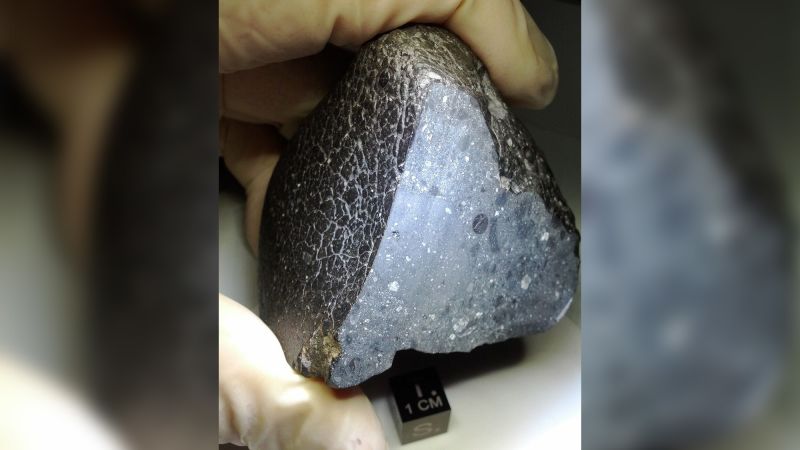Recent research has unveiled a remarkable discovery regarding a mineral contained within a Martian meteorite that descended to Earth, specifically a zircon grain that is believed to display evidence indicating the presence of water on Mars approximately 4.45 billion years ago. This finding is significant because it might represent the oldest direct proof of ancient hot water on the red planet, revealing environments akin to hot springs that fostered life on Earth. Such developments prompt inquiries into Mars’ earlier habitability and its atmospheric evolution throughout geological history.
This groundbreaking insight enhances the current understanding of whether ancient Mars possessed the necessary conditions for life to thrive. Supported by an extensive array of data accumulated from numerous spacecraft diligently exploring Mars’ orbit and surface, the research adds a new dimension to existing evidence of former rivers and lakes that have shaped the Martian landscape historically. However, pivotal questions linger concerning the timeline of water’s emergence on Mars as well as its subsequent disappearance.
The investigation employed a sample sourced from “Black Beauty,” a meteorite identified as NWA 7034 discovered in 2011 amid the Sahara Desert. This meteorite is believed to have originated from Mars itself, ejected following an impact from another extraterrestrial body just a few million years back. Scholars have utilized fragments of Black Beauty extensively for studies pertaining to ancient Martian geology and climate for several years.
Published in the esteemed journal Science Advances on November 22, the research focused intently on a singular zircon grain isolated from the meteorite. Analyses suggest that water became available on Mars a mere 100 million years post the planet’s formation, offering tantalizing insights into the possibility of life existing under conditions that may have mirrored early Earth.
Jack Gillespie, the lead author of the study and a researcher at the University of Lausanne’s Faculty of Geosciences and Environment, commented on the findings: “Our data indicates that water existed in the Martian crust nearly simultaneously with the earliest occurrences of water on Earth around 4.4 billion years ago.” Such revelations are invaluable for deciphering Mars’ planetary evolution, the geological processes that occurred, and the planet’s potential to have supported life forms in its historical timeline.
The contents and structure of Black Beauty prove particularly illuminating, containing a multitude of mineral fragments that narrate over 4.5 billion years of Martian history. Co-author Dr. Aaron Cavosie, a planetary scientist from Curtin University, elaborated on their significance, asserting that Black Beauty serves as a critical contributor to understanding the geologic narrative of pre-Noachian Mars, the timeframe spanning approximately 4.5 billion to 4.1 billion years ago characterized by minimal direct measurements.
Zircon, a durable mineral commonly employed in jewelry, ceramic tiles, and medical implants, became an important focus of study due to its ability to preserve isotopic information about the environment during its formation. Specifically, it contains traces of uranium, which naturally decays into lead over time and allows scientists to date its formation accurately. Black Beauty’s zircon, having remained unaffected during its travel through Earth’s atmosphere, retained its crucial data, which was further analyzed to ascertain traces of elements suggesting the presence of water-rich fluids at the time of its crystallization.
Moreover, the study detected notable concentrations of iron, sodium, and aluminum within the zircon, suggesting a history of interaction with water during its formation 4.45 billion years ago. This aligns with analogous patterns observed in terrestrial zircons formed in hydrothermal systems—areas where heated subsurface water interacts with rocks due to volcanic activity—strongly suggesting a similar environment may have existed on Mars in its infancy.
The implications of these findings are profound, as they propose that Mars’ crust was not only warm but may have been conducive to supporting life forms in the pre-Noachian period. The evidence on the potential for hydrothermal systems during formative years raises crucial questions about the longevity of habitable conditions on Mars. Ongoing studies are pivotal for expanding our understanding of Mars’ geothermal history, further establishing whether these water-rich environments were an enduring feature or transient phenomena.
As we continue to probe the mysteries surrounding Mars, the Black Beauty meteorite stands as a vital reflection of the enigmatic past of the red planet and its evolving conditions. Upcoming missions, including the Perseverance rover’s exploration of ancient lakes on Mars, aim to gather samples that could yield insights into the existence of primordial life. Briony Horgan, a key investigator associated with the rover, emphasizes the importance of returning such samples to Earth for more comprehensive analysis, paralleling the preceding studies of meteorites like Black Beauty to unlock further secrets of Mars and its peculiar history.



